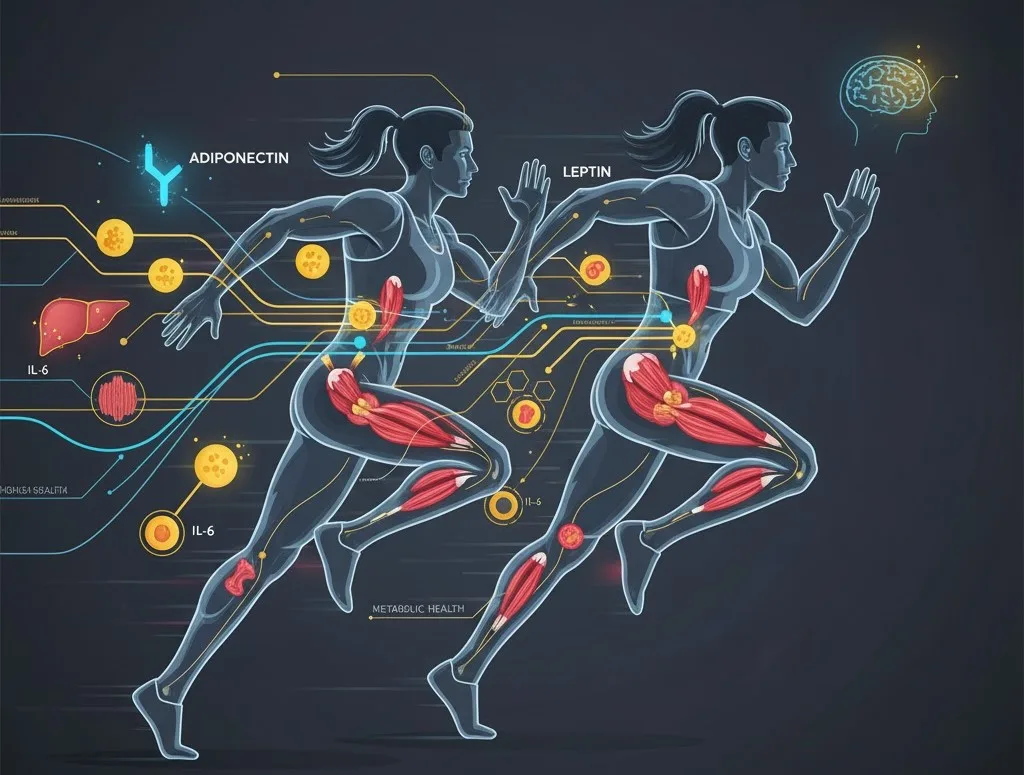For a long time, fat tissue was considered a passive storage depot for energy. We now know that adipose tissue is an active endocrine organ, secreating a host of signaling molecules called adipokines that regulate everything from metabolism and inflammation to appetite and energy balance. For athletes, these molecular messengers play a critical and nuanced role, influencing performance, recovery, and body composition.
Leptin and Adiponectin: The Metabolic Regulators
The two most widely studied adipokines, Leptin and Adiponectin, are key to an athlete's metabolic status.
-
Leptin is the hormone of satiety (fullness), secreted primarily by white adipose tissue in proportion to body fat mass. It signals energy sufficiency to the brain, suppressing appetite and increasing energy expenditure.
-
In Athletes: Lean athletes with low body fat mass typically have low circulating leptin levels. This often contributes to the increased appetite (hunger drive) needed to fuel high-volume training. In cases of relative energy deficiency in sport (RED-S), severely suppressed leptin can disrupt reproductive function and compromise bone health.
-
The Exercise Effect: Long-term, consistent aerobic training typically leads to a reduction in leptin levels due to a decrease in overall fat mass.
-
-
Adiponectin is an anti-inflammatory and "good" adipokine. It enhances insulin sensitivity and promotes fat burning (fatty acid oxidation) in muscle and liver tissue.
-
In Athletes: Adiponectin is often found in higher concentrations in athletes and physically active individuals. Regular exercise, particularly aerobic training, is associated with favorable changes like increased adiponectin levels, which helps maintain metabolic flexibility—the ability to efficiently switch between burning carbohydrates and fats for fuel.
-
Benefits for Performance: Higher adiponectin levels translate to better glucose control and improved lipid metabolism, which are essential for endurance and overall cardiovascular health in an athletic career.
-
The Dual Nature of IL-6: Inflammation vs. Energy Mobilization
Interleukin-6 (IL-6) demonstrates the complexity of these signaling molecules, possessing both a beneficial and a potentially harmful role depending on the context.
-
Acute Exercise (Positive): During an acute bout of moderate to high-intensity exercise, IL-6 is released rapidly by the contracting skeletal muscle (where it acts as a myokine). In this context, it is largely beneficial: it helps mobilize energy substrates by promoting glucose and fatty acid release to fuel the working muscles.
-
Chronic Systemic Inflammation (Negative): In contrast, chronically elevated basal levels of IL-6, often seen in obesity or with persistent overtraining and poor recovery, contribute to low-grade systemic inflammation and can lead to insulin resistance.
-
Athlete Relevance: While an acute spike in IL-6 is a sign of a strong training stimulus, the goal for long-term health and optimal recovery is to have a low resting level of inflammatory markers. Effective recovery strategies are crucial to ensuring IL-6 returns quickly to baseline, preventing the shift toward a chronic inflammatory state that impairs adaptation and performance.
Conclusion
The body's fat tissue is a sophisticated endocrine gland constantly communicating with muscle, liver, and brain. For athletes, manipulating the balance of adipokines through consistent training, appropriate nutrition, and sufficient recovery is vital. Favorable shifts—like reducing leptin (due to lower fat mass) and increasing adiponectin (due to exercise's metabolic benefits)—are key pillars supporting an athlete's health, energy balance, and sustained performance.

